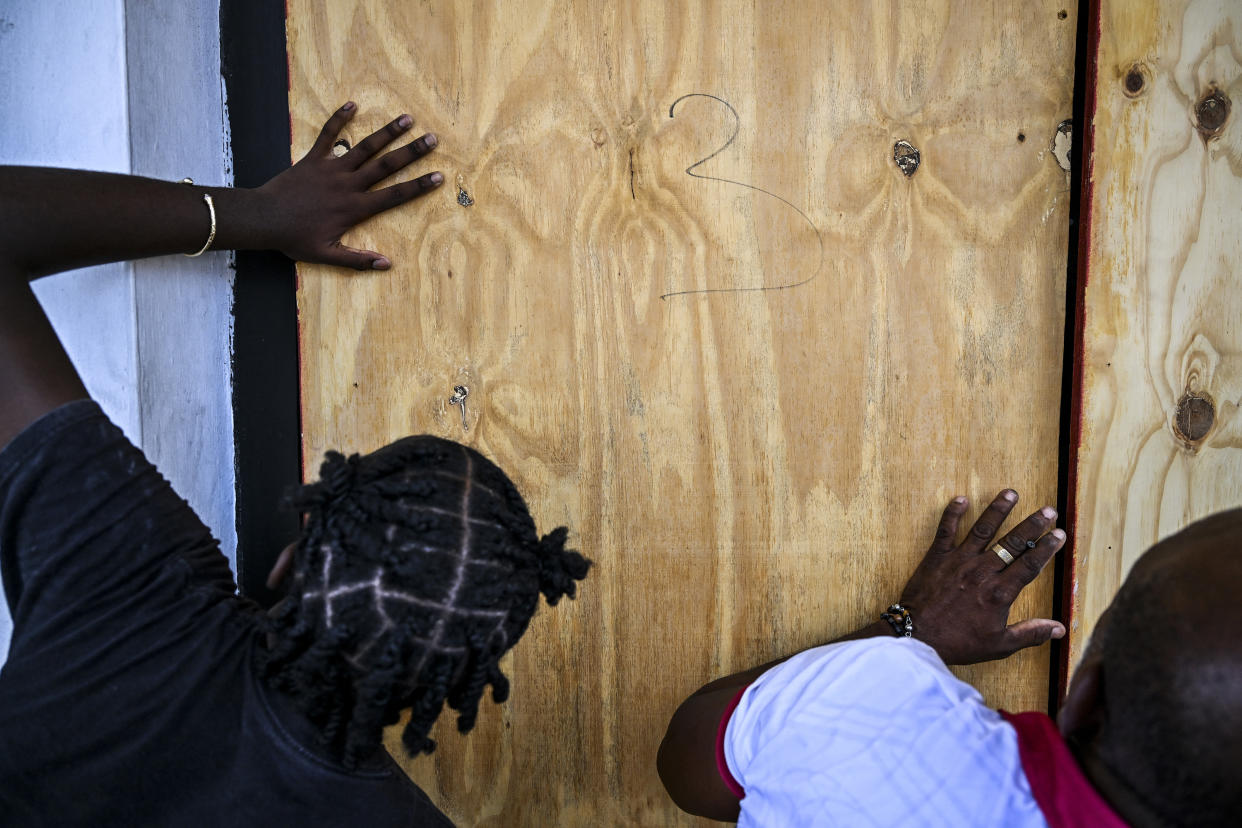Hurricane Beryl intensifies into major Category 4 storm as it targets Caribbean

Hurricane Beryl grew into a Category 4 major hurricane Sunday afternoon as it took aim at the Caribbean, according to the National Hurricane Center.
As of 2 p.m., the hurricane was located about 310 miles east-southeast of Barbados and 405 miles east of Grenada with maximum sustained winds of 130 mph moving west at 21 mph. Hurricane-force winds extend out 30 miles and tropical-storm-force winds extend out 115 miles.
“Continued rapid strengthening is forecast over the next day or so, and Beryl is expected to become an extremely dangerous Category 4 hurricane before it reaches the Windward Islands,” said NHC senior hurricane specialist John Cangialosi.
Hurricane warnings are in place for Barbados, St. Lucia, St. Vincent and the Grenadine Islands, Grenada and the island of Tobago. A tropical storm warning remains in effect for Martinique and a tropical storm watch is in place for Dominica and the island of Tobago.
“A continued quick westward to west-northwestward motion is expected during the next few days,” Cangialosi said. “On the forecast track, the center of Beryl is expected to move across the Windward Islands early on Monday and across the southeastern Caribbean Sea Monday night and Tuesday.”
The intensity is forecast to grow to even more with 140 mph sustained winds and 165 mph gusts before it passes by the Caribbean’s Lesser Antilles with the danger of devastating wind damage.
Storm surge is forecast to be as much as 6 to 9 feet above normal levels along with large and destructive waves while 3 to 6 inches of rain are forecast to fall across Barbados and the Windward Islands into Monday that could cause flash flooding.
Its five-day forecast keeps the storm south of Puerto Rico and Hispaniola but close to Jamaica still as a major hurricane on Wednesday before heading farther west toward the Yucatan peninsula by Friday as a Category 2 hurricane.
“The models show a gradual increase in shear when the system moves across the Caribbean Sea and that should cause Beryl’s intensity to level off and then gradually weaken,” Cangialosi said “However, Beryl is expected to remain a significant hurricane through the next five days.”
Meteorologist Philip Klotzbach with Colorado State University said Beryl’s quick growth into Category 3 major hurricane is the third earliest on record for the Atlantic behind 1966’s Hurricane Alma and 1957’s Hurricane Audrey.
It’s also the first June major hurricane on record east of the Lesser Antilles, he said, having already claimed the record for farthest east a hurricane has formed in June besting one from 1933.
The earliest Category 4 hurricane on record is Hurricane Dennis that grew to that intensity on July 8, 2005.
The NHC is also tracking two more systems with a chance to develop into the season’s next tropical depression or storm.
Trailing Hurricane Beryl farther east is an area of low pressure in the Atlantic several hundred miles southwest of the Cape Verde Islands.
“Environmental conditions appear conducive for additional development of this system, and a tropical depression is likely to form by the middle part of this week while it moves generally westward at 15 to 20 mph across the eastern and central tropical Atlantic,” forecasters said. “Interests in the Lesser Antilles should monitor the progress of this system.”
The NHC gave is a 40% chance to develop in the next two days and 70% in the next seven.
The other system is in the southwest Gulf of Mexico, an area of low pressure over the southern Bay of Campeche with showing more organization Sunday afternoon. An Air Force reconnaissance aircraft continues to investigate the system.
“A tropical depression could be forming. The system is moving toward west-northwestward at 10 to 15 mph and is expected to approach the eastern coast of Mexico tonight and move inland on Monday morning,” forecasters said. “Consequently, a tropical storm watch may be required later today for a portion of the eastern coast of Mexico.”
Whether it forms or not, the system will drop heavy rainfall across portions of Central America and Mexico through early next week.
The NHC gave it an 80% chance to develop in the next two days.
The next two names for the 2024 Atlantic hurricane season, which runs from June 1-Nov. 30, are Chris and Debby.
The first named story of the season, Tropical Storm Alberto, formed on June 19 after a slow start to the season. The height of hurricane season, though, runs from mid-August into October.
The National Oceanic and Atmospheric Administration forecast an above average year in the Atlantic with 17 to 25 named storms, of which eight to 13 are expected to become hurricanes, and four to seven of those be major hurricanes.
_____

